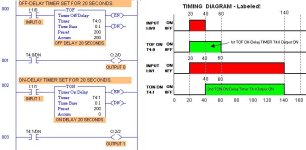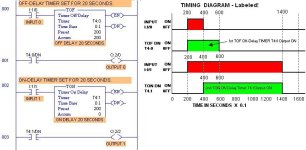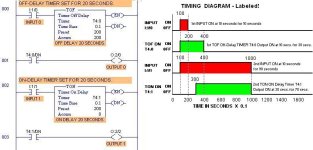SeattlePLC
Member
Hi, I need to create a timing diagram for a couple of timers. I have no idea how to do this. Can anyone help?

Sorry, I don't understand your comment. I carefully tested the TOF timer and it works as shown.Also being picky and to remove all confusion, if the TOF timer input I/1/0 should be ON at the start of the diagram or don't open it, at the same time frame as the delay, you would then see that the signal got removed then timed out for 20 sec before turning off.

I suppose our thinking is different. If I did not know the differences between the timers, I would want to see how they operate when set to the SAME time. Why change the time, when then the students then will not know if the difference is caused by the time difference or the operational characteristics?If the TOF I/1/0 time ON (true) was different to the delay time, then students would easily see when the signal becomes false and the start of the delay time to OFF (why have 2 identical times, when 2 different times could not confuse).

